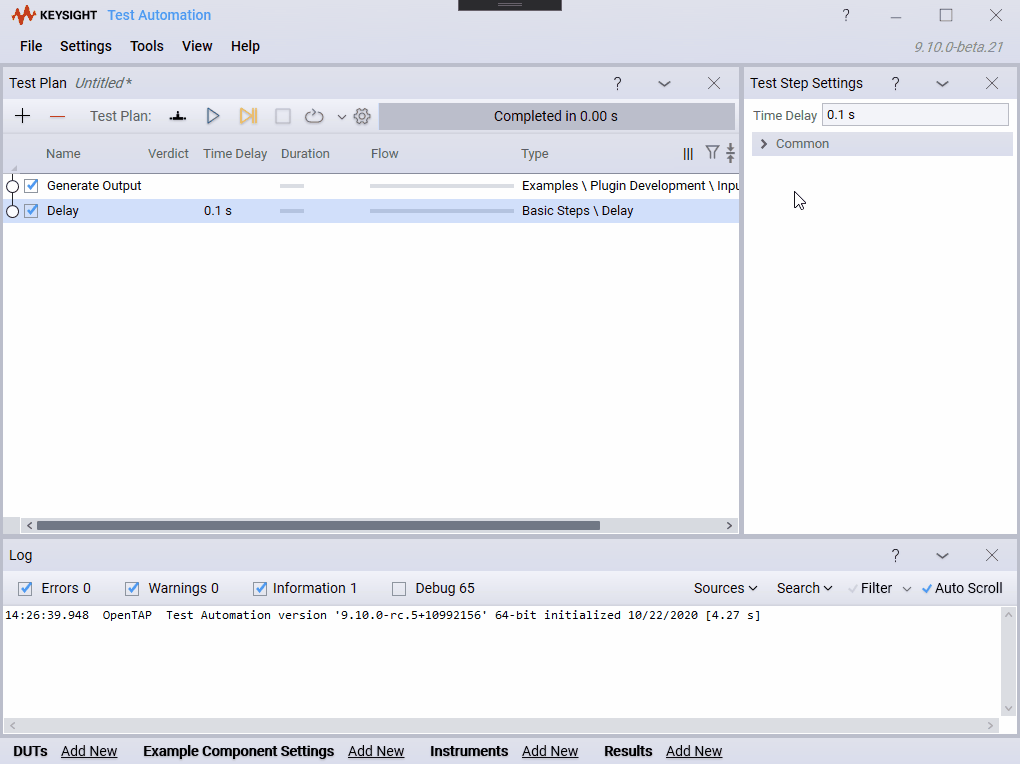Welcome to the October 2020 release of OpenTAP, version 9.10. This release brings improvements to the Input/Output system, and includes several minor features and usability improvements. Some of the key highlights include:
Input/Output system improvements – added support for settings being controlled from an output
Add OpenTAP package reference from the command line – there is a new CLI action that makes it possible to add package reference
Improved the
tap package downloadCLI command – added the optional--outargumentImproved the
tap package installCLI command – added the optional--no-downgradeargument
Input/Output system improvements
In previous versions only settings that had an IInput<> type could be treated as inputs. In this release we extended this possibility to all settings regardless of type.
Input settings no longer have special visualization, as they used to, by having the dropdown boxes where you could assign the value from an output. Instead, you can assign any setting of a matching type to use the value from an output via a context menu.

Add OpenTAP package reference from the command line
In this release we made it easier for you to add OpenTAP package reference using the command line. Using the --project argument allows you to add a package reference to a C# project file. If nothing is specified the reference will be added to the .csproj file of the current directory (if present).
For example, to reference the Demonstration package in the a project called TestProject, you could run the following command in the CLI:

In this command package-reference defines the package to be added to the .csproj file, --repository specifies the repository where the package can be found (defaults to packages.opentap.io), --version refers to the version number of the package to be references and --project indicates the project to add the reference to.
Improved the tap package download CLI command
You can use the optional --out argument with the tap package download command. This argument allows you to specify where you want to download the package. If the argument ends with a / or the name refers to and already existing directory, it is treated as a path to a directory, otherwise it is treated as file name.
The following CLI command download the Demonstration plugin to the MyPlugins directory:

If several output parameters are specified it is assumed that they have the same order as the input packages that are being downloaded. For example:

In this example the Demonstration plugin is saved in the MyPlugins folder and the REST-API is saved in the MyOtherPlugins folder.
If any --out arguments are specified all downloads with no specific --out parameters will be saved in the directory indicated by the last --out.
Improved the tap package install CLI command
We added a --no-downgrade argument to the tap package install CLI command. If this argument is specified tap package install will not install the requested package if:
the package is already installed
the installed version is equal to or greater than the specified version
the installed version is compatible with the specified version
In the following example the Python package version 2.2 is already installed on the system. Trying to install version 2.0 with the --no-downgrade argument makes no changes because a higher version of the package is already installed:
